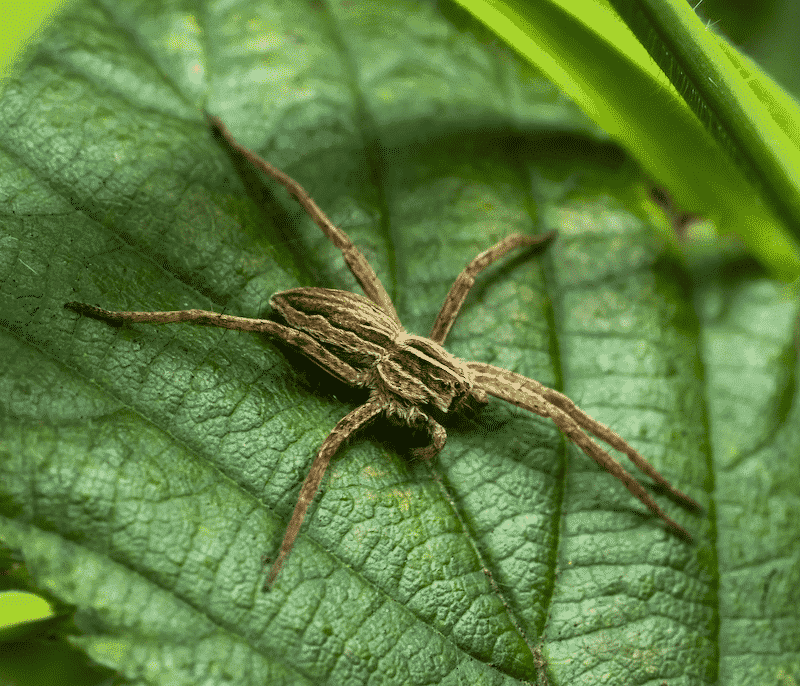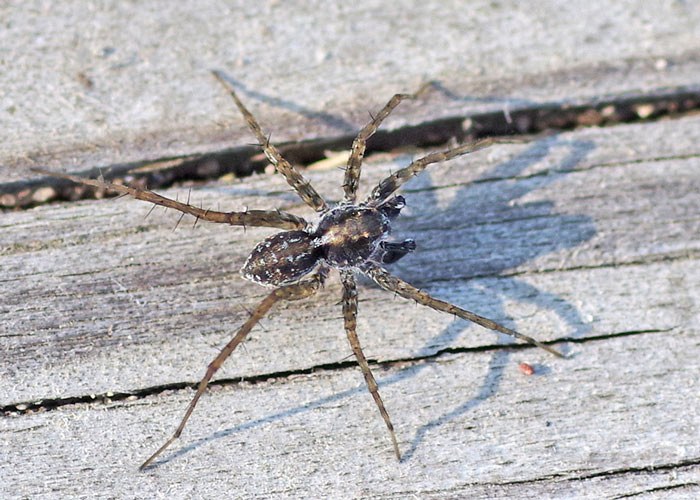Ever wondered about the agile feats of wolf spiders? These fascinating arachnids, known for their hunting prowess and adaptability, possess remarkable climbing abilities that allow them to navigate diverse landscapes with ease. From scaling walls to traversing tree trunks, wolf spiders employ specialized adaptations that make them adept climbers in both natural and human-altered environments.
Unlike web-spinning spiders, wolf spiders rely on their speed and agility to chase down prey on the ground. Their ability to climb various surfaces is facilitated by unique anatomical features such as specialized hairs on their legs, known as setae, which enhance their grip. This agility not only aids in hunting but also serves as an effective escape strategy from ground-dwelling predators.
In this exploration of wolf spiders’ climbing prowess, we delve into the reasons behind their vertical journeys, from foraging for food to seeking mates and establishing territories. Understanding how these arachnids utilize their climbing skills sheds light on their ecological role and survival strategies in different habitats around the world.
Understanding Wolf Spiders

Wolf spiders are robust, agile hunters that prefer to roam the ground in search of prey rather than spinning webs. With over 2,400 species spread across various ecosystems worldwide, these spiders have adapted to diverse habitats ranging from grasslands to rainforests, showcasing their versatility in survival strategies (Integrated Taxonomic Information System, 2019).
Physical Characteristics and Adaptations
Size and Appearance: Wolf spiders exhibit a wide range of sizes, with some species reaching up to over an inch in body length, excluding their legs. Their coloration, typically brown, gray, or black with various markings, serves as effective camouflage in their environments, aiding in both hunting and avoiding predators (Missouri Department of Conservation).
Eye Arrangement: One of the distinctive features of wolf spiders is their eye arrangement. They possess a set of eight eyes, with four small eyes forming a straight row in the front and a posterior row shaped in a V-pattern. This unique arrangement enhances their ability to detect movement and perceive their surroundings, crucial for their nocturnal hunting activities (Smithsonian).
Habitat and Behavior
Nocturnal Hunters: Primarily nocturnal, wolf spiders are most active during the night when they use their keen eyesight and sensitivity to vibrations to locate and capture prey. Unlike many spiders that build intricate webs to ensnare insects, wolf spiders rely on their speed and agility to chase down their meals, much like their namesake, the wolf (BioKids, University of Michigan).
Preferred Environments: While wolf spiders are commonly associated with open habitats like grasslands and meadows, they are also found in diverse ecosystems such as mountains, deserts, and even wetlands. This adaptability underscores their ability to thrive in various environmental conditions by exploiting available food sources (Missouri Department of Conservation).
Can Wolf Spiders Climb?

The question of whether wolf spiders possess climbing abilities is a nuanced one, influenced by their anatomy, behavior, and habitat preferences. Let’s explore this in detail.
Anatomy and Physical Adaptations
Leg Structure: Wolf spiders have stout legs equipped with specialized hairs (setae) that aid in gripping surfaces. These adaptations are particularly advantageous when navigating complex terrains or climbing vertical surfaces (University of Kentucky Department of Entomology).
Climbing Techniques: Observations in natural settings and controlled experiments have shown that wolf spiders are capable climbers. They can ascend various surfaces, including vegetation, rocks, and even human-made structures. Their ability to climb stems from a combination of their muscular strength, adhesive properties of their feet, and the flexibility of their leg joints (Plant & Pest Diagnostics, Michigan State University).
Behavioral Observations
Field Studies: Biologists conducting field research have documented instances where wolf spiders actively climb to access prey, seek shelter, or disperse to new habitats. These observations highlight their adaptability in utilizing vertical spaces within their environments (Missouri Department of Conservation).
Vertical Movement: Wolf spiders demonstrate a range of vertical movements, from scaling low vegetation to climbing tree trunks. Their climbing behavior is often associated with foraging activities, territorial behavior, and reproductive strategies, underscoring the significance of climbing in their ecological roles (BioKids, University of Michigan).
Experimental Insights
Laboratory Studies: Controlled laboratory studies have provided further insights into the climbing abilities of wolf spiders. Experiments testing their ability to scale various surfaces under different conditions reveal their adeptness in overcoming obstacles and navigating complex terrain (Smithsonian).
Adaptability to Structures: In urban environments, wolf spiders have been observed entering buildings and climbing walls, indicating their capability to exploit human-made structures. This behavior highlights their opportunistic nature and ability to adapt to anthropogenic landscapes (University of Kentucky Department of Entomology).
Ecological Significance and Implications

The climbing abilities of wolf spiders have broader implications for their ecological roles and interactions within ecosystems. By effectively utilizing vertical spaces, these spiders can access diverse microhabitats, expanding their foraging opportunities and minimizing competition with ground-dwelling predators (Smithsonian).
Predation Dynamics
Escape Tactics: Climbing serves as a defensive strategy against ground-dwelling predators such as lizards and birds. By ascending vegetation or other structures, wolf spiders can evade immediate threats and reduce their vulnerability to predation (Smithsonian).
Prey Acquisition: Vertical movement enhances their hunting efficiency by providing elevated vantage points from which they can detect and pursue prey. This adaptive behavior underscores the evolutionary advantages of climbing in enhancing foraging success and energy efficiency (BioKids, University of Michigan).
Habitat Utilization
Urban Adaptation: In urbanized landscapes, the climbing abilities of wolf spiders enable them to exploit diverse habitats, including parks, gardens, and building structures. This adaptability underscores their resilience in adapting to human-altered environments and thriving alongside human populations (Plant & Pest Diagnostics, Michigan State University).
Conservation Considerations: Understanding the climbing behaviors of wolf spiders is crucial for their conservation. By recognizing their ability to utilize vertical spaces, conservation efforts can incorporate habitat connectivity and landscape planning strategies to maintain viable populations in fragmented habitats (Bristol Zoological Society).
FAQs About Wolf Spiders’ Climbing Abilities

1. Can wolf spiders climb walls?
Yes, wolf spiders are capable climbers and can scale various surfaces, including walls. Their ability to climb is facilitated by specialized hairs (setae) on their legs that aid in gripping surfaces.
2. What surfaces can wolf spiders climb?
Wolf spiders can climb a variety of surfaces such as vegetation, rocks, tree trunks, and even human-made structures like walls and buildings. They are adept at navigating both natural and urban environments.
3. Why do wolf spiders climb?
Wolf spiders climb for several reasons:
- Foraging: They climb to access elevated vantage points for hunting prey.
- Escape: Climbing helps them evade ground-dwelling predators.
- Reproduction: Male wolf spiders may climb to find mates or establish territories.
4. Are wolf spiders dangerous when they climb into houses?
Wolf spiders are not considered dangerous to humans, as their venom is typically mild and primarily used for subduing prey. They may enter houses in search of prey or suitable habitats but generally avoid human interaction.
5. Do all wolf spider species climb equally well?
While most wolf spider species are capable climbers, the extent of their climbing abilities may vary depending on their habitat and physical adaptations. Species that inhabit dense forests, for example, may have different climbing behaviors compared to those in open grasslands.
Conclusion
Wolf spiders exhibit remarkable climbing abilities facilitated by their anatomical adaptations and behavioral flexibility. From scaling vegetation in natural habitats to navigating human-made structures in urban landscapes, these spiders demonstrate a versatile approach to accessing resources and avoiding predators. By exploring the climbing behaviors of wolf spiders, we gain insights into their ecological roles, evolutionary adaptations, and conservation needs in a changing world.

